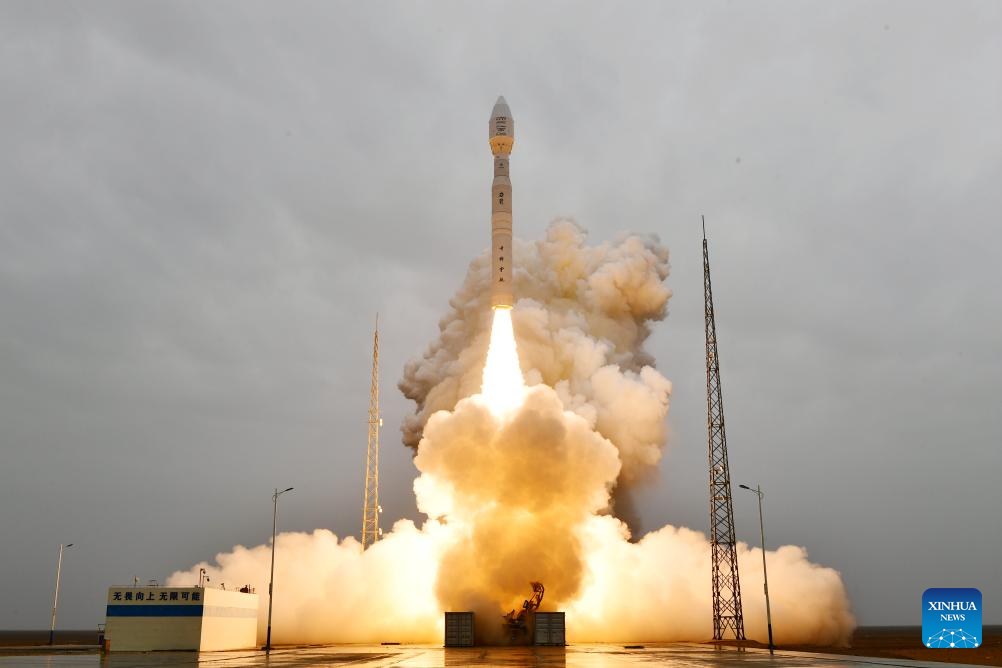8.10.2025

China’s burgeoning space portfolio is prompting U.S. Space Force leaders to issue fresh warnings about Beijing’s ambitions to compete with Washington’s on-orbit enterprise.
The Chinese government is leveraging years of observing U.S. and allied systems to accelerate development of its space capabilities. “It is concerning how fast they’ve done it,” Deputy Chief of Space Operations for Intelligence Brig. Gen. Brian Sidari said during a Sept. 22 panel discussion at the Air & Space Forces Association’s Air, Space and Cyber Conference in National Harbor, Maryland.
Beijing began consolidating its military space portfolio under the newly established Aerospace Force in 2015. A decade later, China has deployed more than 1,189 satellites to orbit, according to a September space threat fact sheet published by the Space Force. It has a breathtaking range, spanning global satellite communications networks; position, navigation and timing spacecraft; and inspector satellites that could support wartime operations.
Among recent launches is Yaogan-45, a reconnaissance satellite that was placed in medium Earth orbit (MEO) on Sept. 8 by a Long March 7A rocket. Yaogan-45’s location in MEO—rather than the more common low Earth orbit (LEO)—is a “very unusual” choice for a remote-sensing platform, said Chief Master Sgt. Ron Lerch, Sidari’s senior enlisted advisor.
In 2024, China began launching satellites for Smart Skynet, a new broadband constellation in MEO, to establish data relay infrastructure in that orbit, Lerch noted. The network is planned initially to include eight spacecraft operating at 20,000 km (12,430 mi.) but could grow to as many as 32, with space-to-space connectivity to networks in higher and lower orbits, according to the China Aerospace Science and Technology Corp. (CASC).
“That starts to paint a picture . . . that they value remote sensing to the point where they want resiliency, and layers of it,” Lerch said.
China also launched five satellites for its Tongxin Jishu Shiyan experimental communications network, Lerch disclosed. Observers have tracked these spacecraft maneuvering around the geosynchronous Earth orbit belt, “which is very uncharacteristic for a system that’s supposed to be providing satellite communications,” he said.
Lt. Gen. Douglas Schiess, commander of Space Forces-Space, called China the biggest space threat facing the U.S. The component field command plans, directs and executes operations in support of U.S. Space Command.
“They are bringing on capability—I don’t want to say daily, but at least monthly,” Schiess told reporters Sept. 24.
In the first seven months of 2025, Beijing conducted 42 total space launches, 41 of which succeeded, according to the Space Force. The launches placed 112 payloads into orbit, including 19 intelligence, surveillance and reconnaissance satellites. China’s fleet now includes more than 500 spacecraft equipped with optical, multispectral, radar and radio frequency sensors.
Among its recent launches, the nation deployed two demonstration remote-sensing satellites, dubbed Shiyan-30-01 and -02, into orbit on Sept. 29, according to CASC.
Beijing continues to expand its space portfolio across multiple orbits. To compete with Western nations’ proliferated-LEO (p-LEO) constellations, such as SpaceX’s Starlink, China plans to launch nearly 650 satellites by year-end and 15,000 by 2030 for its G60 communications fleet. The China Satellite Network Group is developing a separate p-LEO constellation with 13,000 satellites.
China could soon increase its launch cadence as it develops reusable launch vehicles, Sidari said. The country completed a vertical-takeoff-and-landing test with a reusable launch vehicle that reached 12 km in 2024. “It is concerning once they figure out that reusable lift,” he said.
Rendezvous and proximity operations remain a major Chinese focus. In June, commercial space trackers observed two Chinese satellites, Shijian-21 and Shijian-25, maneuvering in close proximity with each other in GEO. Once aligned, the satellites appeared to conduct “probable satellite refueling experiments,” the Space Force said. China is also developing inspector satellites that the Pentagon warns could someday function as weapons.
Quelle: AVIATION WEEK
